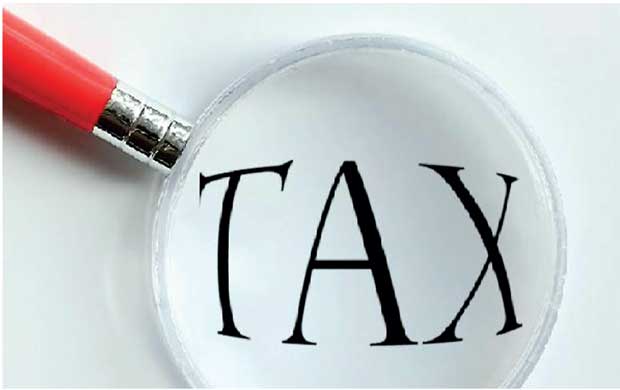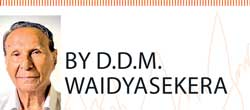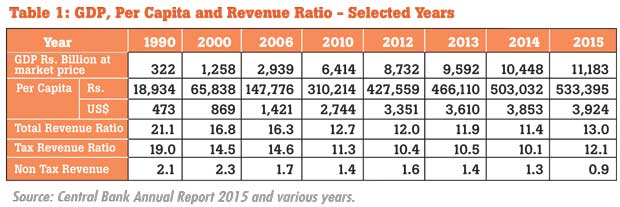06 Dec 2016 - {{hitsCtrl.values.hits}}

 A country’s fiscal and taxation system is a major determinant of macro-economic policy and sustainable growth, particularly in areas such as government revenue, public debt, fiscal deficit, inflation as well as resource allocation, income distribution and economic stability.
A country’s fiscal and taxation system is a major determinant of macro-economic policy and sustainable growth, particularly in areas such as government revenue, public debt, fiscal deficit, inflation as well as resource allocation, income distribution and economic stability.
Currently, Sri Lanka’s fiscal and taxation system is at a critical juncture. While overall GDP as well as per capita income havebeen steadily increasing, the total government revenue and tax revenue have been decreasing over time (Table 1).
As indicated in the table, the total government revenue, tax revenue and even non-tax revenue have declined. The increaseseen in 2015 was due to the one-off taxes such as the Super Gain Tax and other levies implemented during that year.
Respective governments have recognized the critical nature of the situation and the necessity to reverse this trend. The Presidential Taxation Commission Report of 2010 as well as the successive recent Budget Speeches havestressed this issue.
Reasons for the decline
The main reasons for this decline include;
1. Unplanned ad hoc tax incentives in the form of various tax holidays, reliefs and concessions, duty waivers, etc., which have eroded and narrowed the tax base. The tax loss is estimated to be around 1.35 percent of annual GDP.
2. Narrow tax base and coverage; the total number of taxpayers being about 3 percent of
the population.
3. Increase in allowable expenses
in computing statutory income and profit.
4. Periodic increases in tax free allowances and ad hoc reductions in rates of tax both corporate and non-corporate sectors.
5. Ad hoc changes to the tax system to meet short-term cash flow requirements of the government consequent to lack of consistency in fiscal policy leading to uncertainty among tax payers.
6. Lack of elasticity and buoyancy in the tax system both being less than unity.
7. Existence of a large informal economy resulting in large-scale tax evasion and avoidance as well as black money.
8. The grant of periodic tax amnesties (11 since 1964) which have been largely failures, not producing the expected results.
9. A complicated tax system and weaknesses in tax administration and its mechanism.
Composition of revenue – direct and indirect
Another aspect in the current tax system, which needs change, is the composition of tax revenue. Direct taxes comprise on average less than 20 percent of tax revenue (2 percent of GDP) while indirect taxes comprise over 80 percent or 8 percent of GDP.
In this context, both the 2010 Presidential Taxation Commission and recent Economic Policy Statement (EPS) of the Prime Minister set the target of achieving a 40:60 ratio of direct to indirect taxes by 2020. This has also been reiterated in the 2017 Budget speech.

Fiscal and tax incentives
In respect of tax incentives granted both under Law 17 of the BOI and IRD, there are both pros and cons in granting such concessions particularly in relation to attracting Foreign Direct Investment (FDI). On average, Sri Lanka has attracted around US$ 500 million (about 1.5 percent of DGP) as FDI during the last decade.
However, the tax incentive regime if considered necessary in a competitive international context, must be designed, and implemented in a more methodical and cost-effective way. Their cost-benefit should be properly examined and subjected to continuous review so that the impact on revenue is minimized and the required economic objectives realized.
The 2017 budget also proposes to minimize tax exemptions by removing exemptions applicable on the income from investment on listed securities, dividends, unit trusts and other instruments. Notional tax credit applicable on secondary markets are also to
be removed.
Base and coverage
One of the important elements in securing a satisfactory level of tax revenue is the base and coverage of the taxes. While certain steps to broaden the tax base and coverage have been taken (for example, the inclusion of public servants hitherto exempt from income tax, widening the base of the VAT and NBT by adding the wholesale and retail sectors among others), the base and coverage still need to be enlarged. This includes a re-examination of the tax free allowances, the enhanced allowable expenses under Section 25 of the Inland Revenue Act and other sections.
Further, the constant changes in the rate structure, the multiplicity of rates, the recent rate concessions for ‘professionals,’ and the recent proposals to change the basis of the corporate rate structure have tended to further complicate the system.
Capital gains
Capital gains were introduced in Sri Lanka in 1959. It underwent several changes and was abolished in 2002. However, realized, capital gains are: equivalent to income; minimize opportunities for tax avoidance;accrue generally to the property owning class; and concentrated in higher income brackets. Hence, the government in its 2017 budget announced its re-introduction from 1 April 2017 at the rate of 10 percent.
VAT debate
The VAT introduced under VAT Act No. 14 of 2002 has drawn much attention and debate recently, particularly its recent amendments. In principle, a VAT system is superior to other forms of sales taxation due to its non-cascading character; about 160 countries have a VAT system in some
form or other. However it has also several weaknesses.
In terms of revenue performance, the VAT in Sri Lanka has not shown regularity and reliability. It has been characterized by volatility and the need for complex manipulation to prevent revenue erosion in the form of input credits and refunds.
The problems of VAT in Sri Lanka relate to constant changes in the threshold, a large number of exemptions, zero rating list and rate structure. Problems also arise in the area of wholesale and retail trade, financial services and existence of fraud. The much vaunted self-checking and self-policing feature of the VAT system has been found to be wanting.
The VAT system is an ideal instrument for a market economy but ill-suited due to administrative capacity. The 2017 budget proposals envisages certain measures such as the removal of the SVAT schemes, further broadening of the VAT base and consolidating VAT Act to incorporate all amendments up to date.
Customs duties, excise duties, and other taxes and levies
Customs duties in the form of three band tariffs of zero, 15 percent and 30 percent, brought in Rs. 132 billion or 9 percent share of revenue in 2015.
Excise duties including special excises are a potential source of revenue and generated 34 percent share of tax revenue. There are other miscellaneous taxes and levies including cesses, PAL, telecom levy, stamp duty, share transaction levy etc., which contributed to 17 percent of the revenue in 2015. The complicated tax system in Sri Lanka of over 22 taxes and levies needs simplification. Simplification however does not depend on legislative measures alone but
also on administrative procedures and regulations.
Provincial and local taxation
Apart from national taxes, provincial and local taxation is also a significant part of the Sri Lankan tax system. From a revenue point of view, however, Provincial taxation is unsatisfactory, bringing in only 4 percent of central government revenue or 0.6 percent of GDP. Provincial expenditure is around 11 percent of government revenue and the deficit is met by grants from
the Centre.
The problem has been complicated by the abolition of BTT in 2011, its main source of revenue and its replacement by 100 percent stamp duty, 70 percent of motor vehicle fees and 33 1/3 percent of NBT from the centre. Local government revenue may also undergo change with the proposed Grama Rajjaya concept involving the creation of 2500 new units at grassroots level.
Revenue administration
It is the level of efficiency of the revenue administration, which determines the effectiveness of the revenue system. In the current context, with the declining tax ratio and the urgent need to increase government revenue, the effectiveness of the tax administration, its structures, systems and processes need thorough examination, its weaknesses identified and measures to rectify them and make the administrative system an efficient and effective instrument of
tax collection.
Several measures have periodically been taken to remedy these weaknesses and improve the efficiency of the tax administrative system at Customs, Finance Ministry, and Inland Revenue. The 2017 budget contains further proposals such as establishing a National Tax Council and tax ombudsman office, smart E-invoice devices for VAT and excise, streamlining Customs procedures among others. However, there is still a long way to go; further measures are needed to improve revenue administration and co-ordination.
(This article is based on a recently released Institute of Policy Studies of Sri Lanka (IPS) publication, ‘Taxation in Sri Lanka: Current Trends and Perspectives’)
10 Jan 2025 3 minute ago
10 Jan 2025 8 minute ago
10 Jan 2025 37 minute ago
10 Jan 2025 54 minute ago
10 Jan 2025 1 hours ago